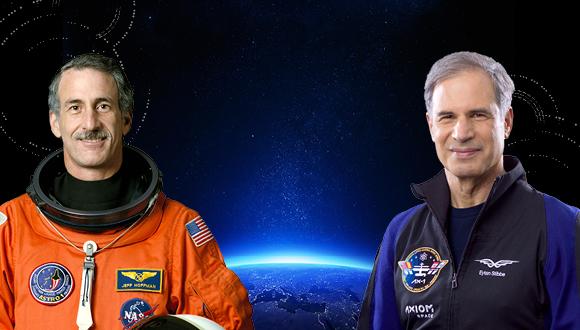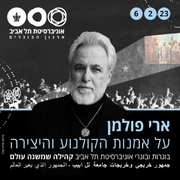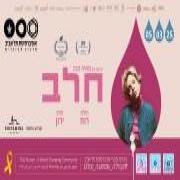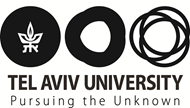Setting New Frontiers
The Tel Aviv University Alumni Organization, in collaboration with Rakia Mission, the Space Torah Project, and the Horizon Community held an event that was “out of this world” at the Bar Shira Auditorium at Tel Aviv University.
The event featured a fascinating panel with the participation of the two astronauts:
Eytan Stibbe, an AX-1 astronaut, and member of the Tel Aviv University Board of Government
Dr. Jeffrey Hoffman, MIT Professor, NASA astronaut (ret.), MOXIE (Mars Oxygen In-Situ Resource Utilization Experiment) Deputy Principal Investigator
Amos Elad, VP for Resource Development, Public Affairs, and Alumni Affairs at Tel Aviv University, delivered a welcoming speech and noted, “It is an honor for us at Tel Aviv University to host you, simply because you are an inspiration to us all.
The challenge of the university and the State of Israel in general is to build the infrastructure for education. We support the younger generation and look up to you and to you in space. You’re a great inspiration to all of us. We will teach them to follow in your footsteps and push the boundaries.
Our slogan at the university is “Pursuing the Unknown”, to constantly ask questions. Especially in these days, the great importance and ability of our university and higher education to think outside the boundaries, to be free and independent”.
Sigalit Ben Hayoun – Co-Founder and Head of the Tel Aviv University Alumni Organization thanked all the partners who contributed to the event's success.
The event started with the video “Space Torah – A Journey in Space”, presented by Rachel Raz, the Executive Producer. During the panel, which was moderated by Vered Cohen-Barzilay, the CEO of Out of the Box and Horizon Space Community member, an alumna of the Faculty of Social Sciences at Tel Aviv University, the astronauts told their fascinating stories. Eytan Stibbe answered the question “Now that you’ve experienced this, who do you think the next generation will be?”:
“In my opinion, the difference between the different generations is in the composition of the content of the space mission. My mission in space was to share with as many Israelis, scientists and children, thinkers and poets as possible on the journey to space, to describe space to everyone. The future is in the collaboration between government companies and private and international companies, in addition to the career of astronauts, there will be the opportunity to fly to space for a selection of professionals, such as doctors, teachers, architects, and many more, who will undergo a special space training”. Additionally, he shared that “as a child, I always dreamed of flying like Superman. Then I became a pilot. And in the end, I fulfilled my dream of floating in space. The most important thing in life is the journey – it’s what gives you meaning in life. Not the final destination”.
Regarding Zikaron BaSalon in Space, he said “My intention was not only to remember the Holocaust, but to emphasize the fact that we humans need to remind ourselves that all humans strive to live in peace and happiness and to appreciate the diversity of humans. We need to remember this, especially as Jews”.
Stibbe also mentioned Ilan Ramon: “Ilan was my commander and he was a close friend. I visited him at NASA in training and watched his launch. After I informed my family about being accepted to the mission, I informed Ilan’s children straight away, and I knew that if they said no- I wouldn’t go, but they were very much in favor. Breaking boundaries and exploring space involves considerable risks that provide a source of much inspiration and mission”.
Dr. Jeffrey Hoffman answered the question “Why are you a second generation of astronauts?” thus:
“The first generation – when I grew up all the astronauts were military personnel, pilots – which I’m not. So, I didn’t think I’d make my dream come true. The second generation – medical personnel, researchers, and academics, were allowed to enter NASA and experience space. The third generation – this is Eytan – are the astronauts of the private market. I am glad and I encourage this change”. When asked whether it is worth sending only robots into space, he answered: “It is always better to send astronauts to space and not just robots so that they could deal with the challenges in space in real-time (malfunctions, obstacles, etc.). There is no substitute for the knowledge, abilities, and talent of humans”.
After the panel, TED talks were given by the best researchers at Tel Aviv University who took part in the Rakia Mission:
Prof. Colin Price, Senior Researcher at the School of Environment and Earth Sciences, Faculty of Exact Sciences at Tel Aviv University. Prof. Price has been studying electrical phenomena in the atmosphere, especially lightning and thunderstorms, for more than 30 years. Today, he leads a Tel Aviv University project on the climate crisis. He noted that “in 2003, we studied lightning sprites with Ilan Ramon, and 20 years later, Eytan Stibbe repeated the experiment with great success”.
Prof. David Burshtein, Senior Researcher at the School of Electrical Engineering, at the Faculty of Engineering at Tel Aviv University. He noted: “Our study demonstrated that the CRISPR-based diagnostic approach is effective in providing accurate and sensitive genetic testing in space, enabling rapid identification of diseases and pathogens. This could have significant implications for monitoring astronaut health and tumor development during prolonged space missions”.
Prof. Haim Suchowski, an Associate Professor in the School of Physics & Astronomy, Faculty of Exact Sciences, Tel Aviv University. His research focuses on fundamental aspects of light-matter interaction, especially in Nano-photonics, ultrafast physics, and remote sensing. He has published more than 60 journal articles and 14 patents.
Yoav Simhony, a PhD student in at the Faculty of Engineering at Tel Aviv University. Simhony noted that “Tel Aviv University is researching an innovative mechanism that will enable the integration of advanced electronics in space while dealing with the destructive phenomenon of cosmic radiation. As part of the Rakia Mission, the launch of the second Israeli astronaut into space, the university launched an experiment to the International Space Station that demonstrated the operation of the mechanism in the space environment”.




